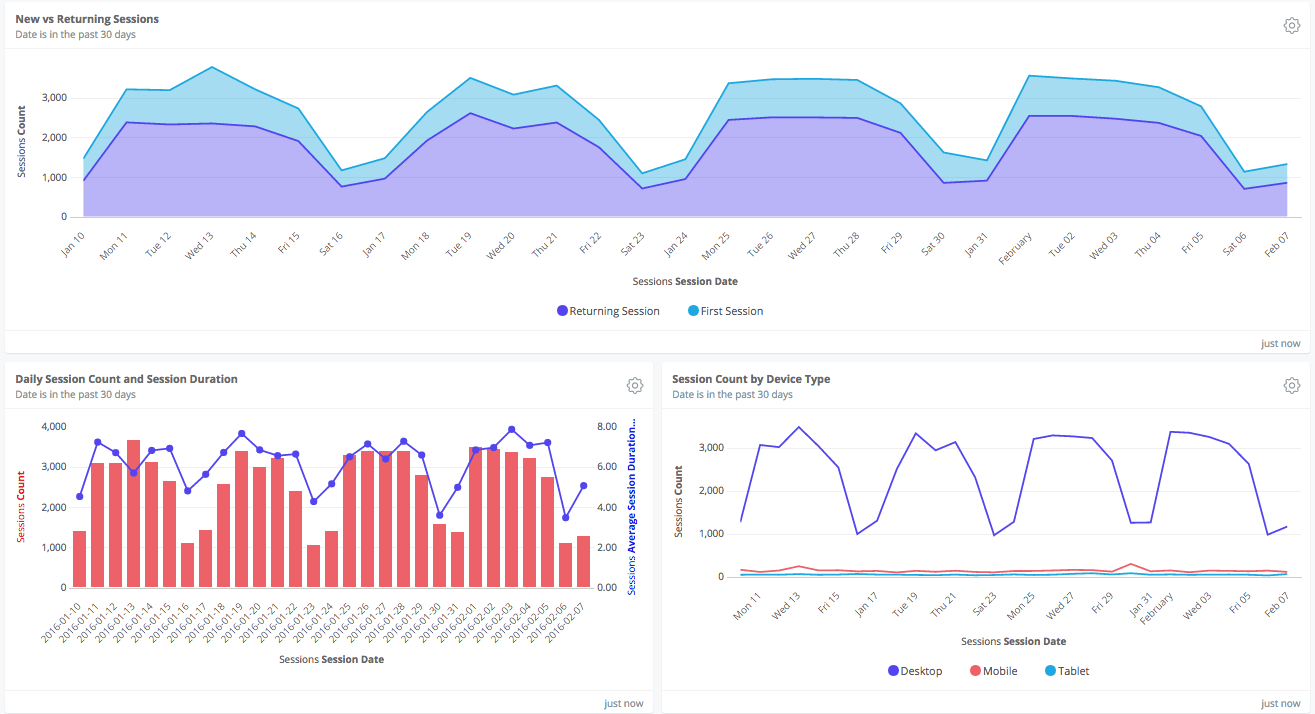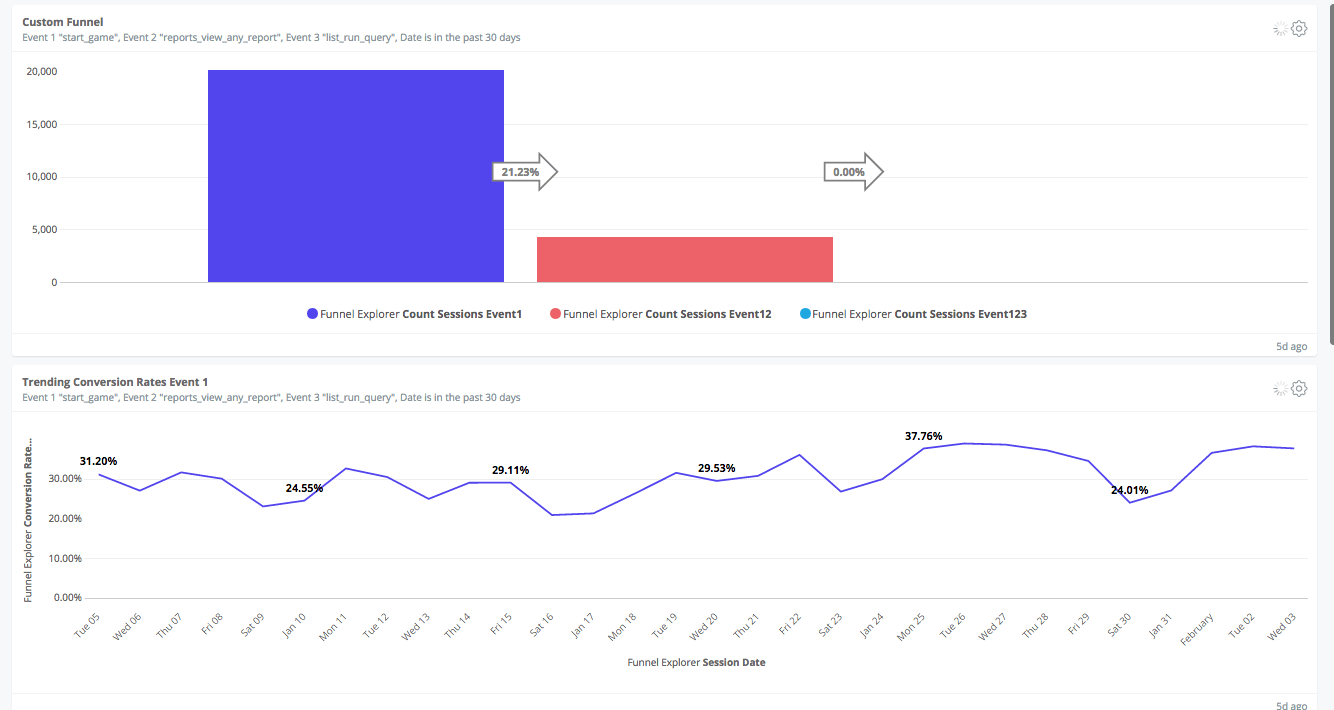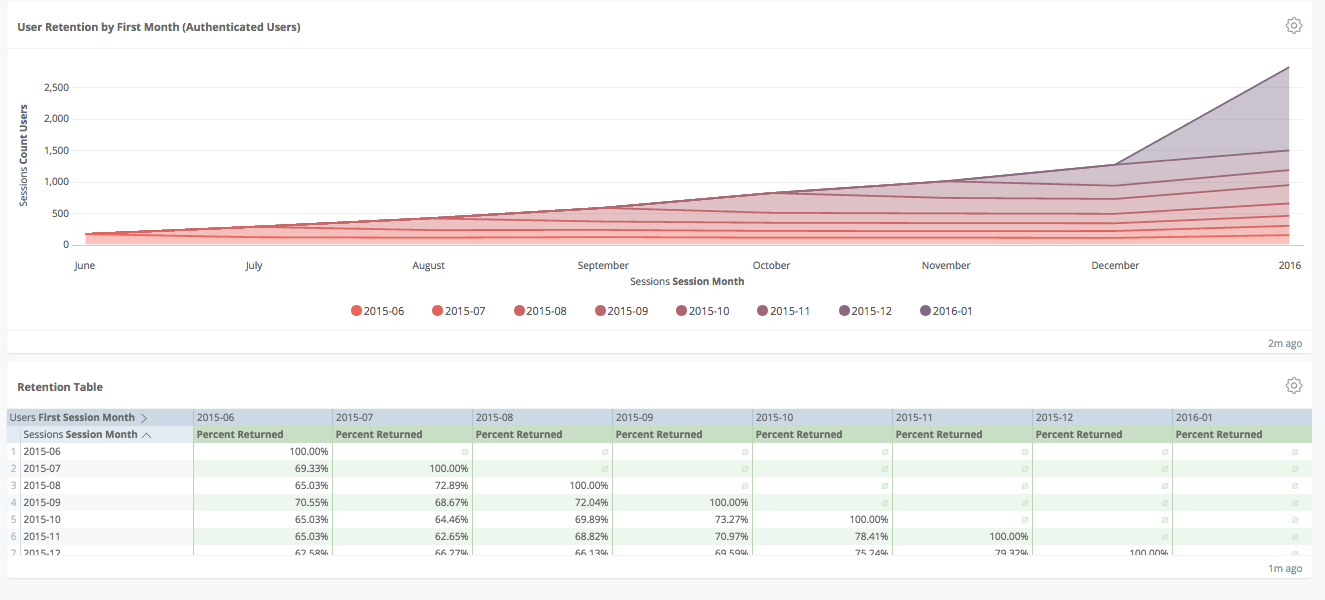Heap and Looker Partner to Make Data Collection Painless
Starting today, we’re excited to announce a new Looker for Heap SQL Block. With Looker and Heap, anyone can answer essential questions that drive growth like user engagement, attribution and application performance. Heap makes collecting data on web or mobile activity painless, and Looker for Heap SQL makes deploying a BI solution on top of the resulting data just as easy to deploy across an entire organization.
What is Heap SQL?
Web and mobile analytics can provide meaningful insights to any modern organization. Heap automatically captures user actions—clicks, taps, gestures, form submissions, page views—and allows you to add any additional custom properties you’d like without even having to touch code. What makes Heap unique is that as your analytics’ requirements continue to grow and change with your business and you add new events to track – these events are automatically updated historically, so you have a full view of the new event’s performance over time. The events defined in Heap can provide insights into user behavior, performance trends of key metrics, and retention data valuable for any website or application.
Heap recently launched Heap SQL, which provides retroactive data access in a managed Redshift data warehouse to all of these automatically defined and custom events. Users have direct SQL access to define any reporting or analysis they’d like. And as you make changes to your event definitions in Heap, these are reflected in your Redshift data warehouse too – so historical analysis is just as accurate as you need it to be.
Looker for Heap
Similar to Heap’s philosophy, at Looker, we know that requirements change over time for a growing and evolving business—and an analytics solution needs to keep up with new requests while still maintaining a centralized set of data definitions across an organization.
Looker’s LookML modeling layer is designed to easily accommodate modifications and additions, since it’s maintained in a version controlled repository that provides data transformation at time of query, not ahead of time. A data team can create and modify metrics for an entire organization just by modifying a few lines of LookML. Additionally what this means for reporting and analysis is that it’s curated directly from the source—the Redshift data warehouse—such data doesn’t have to be pre-aggregated and row level granularity can still be accessed.
Looker Blocks for Heap creates a starting point to get the most out of your Heap data with Looker. Metrics to explore users, events, and sessions are included in the LookML specifically for Heap SQL’s data in Redshift. These definitions can be directly utilized by any user in Looker’s Explore interface to create custom ad-hoc reports and analysis, even without any knowledge of SQL. We’ve highlighted some cool things you can do with Looker Blocks for Heap here:
Custom Reporting and Analysis for Sessions

The holistic view of a user’s visit to a website or application can provide indicators of performance and user behavior. With Looker and Heap SQL, you can explore metrics like:
Session duration
Events per session
New versus returning user sessions
Average sessions per user
And you can slice and segment these metrics however you’d like, for instance by:
Referrer
Source medium
Device type
Region
This flexibility allows you to explore your application’s data to find limitless insights into user behavior and key metric performance.
Funnel Explorer

Looker Blocks for Heap includes a Custom Conversion Funnel, so you can see conversion metrics for any combination of events you’d like. These can be filtered and segmented by any session metric. Trending conversion rates over time are useful to observe performance for any step of the funnel.
User Retention Analysis

Observe how segments of customers are returning over time, based on metrics like first visit. Filter on other user metrics like latest session, lifetime session count, and duration of time on the application to dig deeper into your retention analysis.
Try Looker and Heap
Refer to Looker’s discourse page for more details, or access the Heap Block by reaching out to your assigned Looker analyst or via a Looker trial. For a free trial of Heap, simply sign up here or reach out to sales@heapanalytics.com for information about Heap SQL.This article was originally published on Looker’s blog by Erin Franz, Alliances at Looker.
